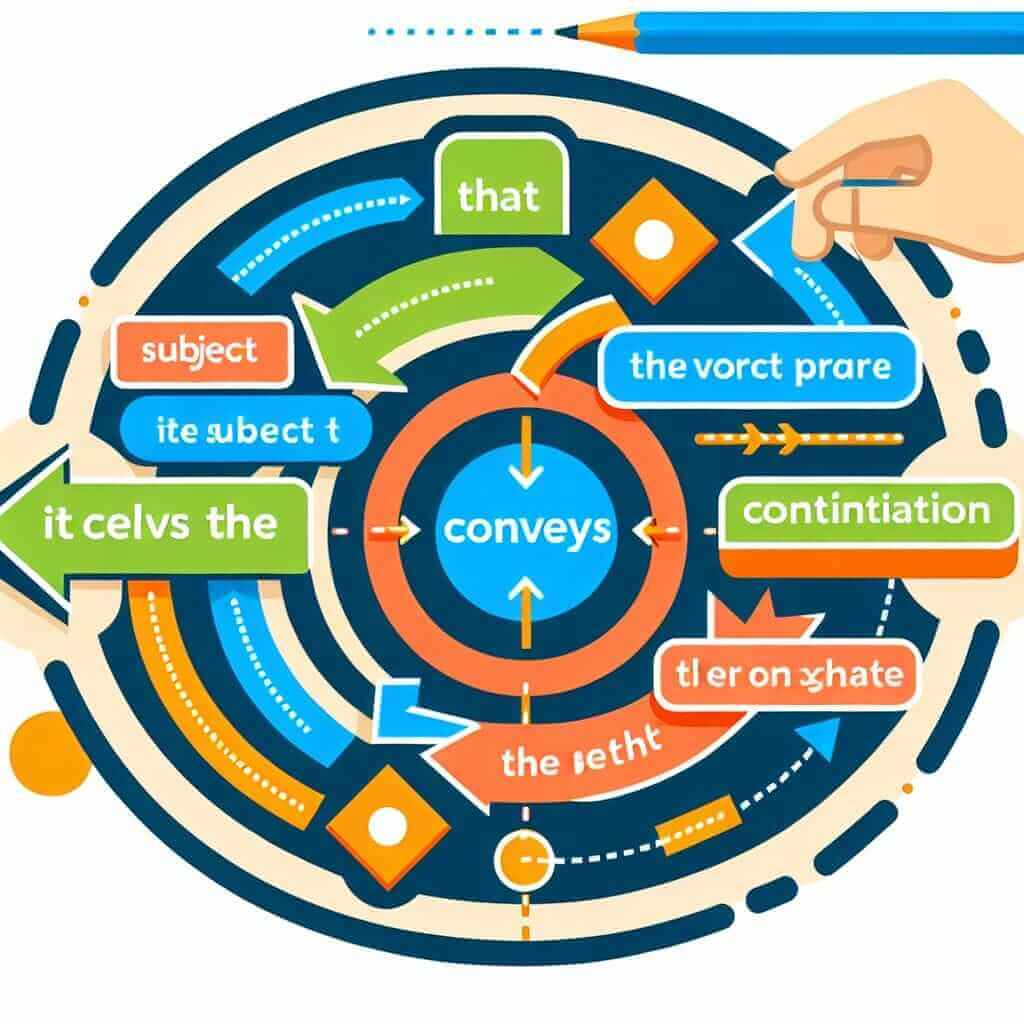“It conveys that” is a phrase that often trips up IELTS candidates, despite its relative simplicity. While it may not be a grammatical construction you need to actively use, understanding its nuances is crucial for comprehending complex texts in the Reading and Listening sections. Furthermore, skillful use of this phrase and its synonyms can significantly enhance your Writing and Speaking scores, demonstrating a sophisticated grasp of the English language.
Let’s consider a few examples of how “it conveys that” might appear across different IELTS sections:
Listening: “The use of darker colours in the painting, it conveys that sense of melancholy the artist was experiencing at the time.”
Reading: “The author’s choice of the word ‘ephemeral’ conveys that she believes beauty to be fleeting and transient.”
Writing Task 2: “The escalating rates of obesity convey that current health campaigns are failing to resonate with the public.”
Speaking Part 3: “The widespread adoption of smartphones, I believe it conveys that we are living in an increasingly interconnected world.”
In each of these examples, “it conveys that” introduces an interpretation or understanding of something previously mentioned. This phrase allows the speaker or writer to draw a conclusion or highlight a specific implication.
Deconstructing “It Conveys That”
Understanding the Phrase and its Significance in IELTS
“It conveys that” functions as a reporting verb structure, similar to “it suggests that” or “it implies that.” The “it” refers back to a previously mentioned idea, object, or situation, while “conveys” acts as the verb, highlighting the act of communication or transmission.
Why is this phrase important for IELTS?
- Reading and Listening: You will encounter this structure frequently in academic and descriptive texts, as writers explain the significance of details or analyze information.
- Writing and Speaking: Using “it conveys that” and its synonyms allows you to present ideas more effectively, demonstrating analytical skills and vocabulary range.
Structure and Usage
The structure of “it conveys that” is straightforward:
[Subject] + [Convey] + [That] + [Clause]
- Subject: The “it” refers back to the subject being discussed.
- Convey: This verb can be replaced with synonyms like implies, suggests, indicates, demonstrates, highlights, reveals, or signifies.
- That: This conjunction introduces the interpretation or message being conveyed.
- Clause: This contains the main point or message that the subject is communicating.

Mastering “It Conveys That” for IELTS Success
Applying the Phrase in Different IELTS Sections:
1. Listening and Reading:
- Pay attention to how “it conveys that” is used to link evidence to conclusions.
- Practice identifying the subject (“it”) and the message being conveyed.
- Example: “The author’s frequent use of hyperbole, it conveys that he is attempting to emphasize the seriousness of the situation.”
2. Writing Task 2:
- Use “it conveys that” to strengthen your arguments by explaining the implications of your evidence.
- Example: “The increasing number of people choosing to work from home conveys that traditional office environments may no longer be the most effective.”
- Vary your language by using synonyms like “this suggests that” or “this data indicates that.”
3. Speaking Part 3:
- Employ “it conveys that” to express your interpretation of trends or social phenomena.
- Example: “The popularity of online education, it conveys that people are seeking more flexible and accessible learning options.”
- Ensure your use of the phrase sounds natural and not overly formal.
Achieving a Higher Band Score:
- Vocabulary Enhancement: Demonstrate a wide range of vocabulary by utilizing synonyms for “convey” such as “demonstrates,” “illustrates,” “implies,” “signifies,” etc.
- Complex Sentence Structures: Integrate “it conveys that” into more complex sentences to showcase grammatical range.
- Example: “While the initial reaction to the new policy was positive, the subsequent decline in public support, it conveys that deeper concerns may not have been addressed.”
- Coherence and Cohesion: Use “it conveys that” as a cohesive device to link ideas within and between paragraphs.
Common Mistakes and How to Avoid Them:
- Incorrect Pronoun Reference: Ensure that “it” clearly refers back to the intended subject to avoid ambiguity.
- Overuse: While useful, avoid using “it conveys that” excessively, as it can make your writing sound repetitive.
- Informal Register: Be mindful of the formal register required for IELTS and avoid using overly casual synonyms like “it shows that.”
Conclusion
Mastering the use of “it conveys that” and its synonyms is a valuable tool for achieving success in the IELTS exam. By understanding its function, practicing its application, and employing a diverse range of vocabulary, you can significantly enhance your ability to communicate effectively and achieve your desired band score. Remember to review authentic IELTS materials and familiarize yourself with different ways this phrase is used in various contexts.